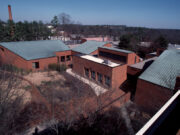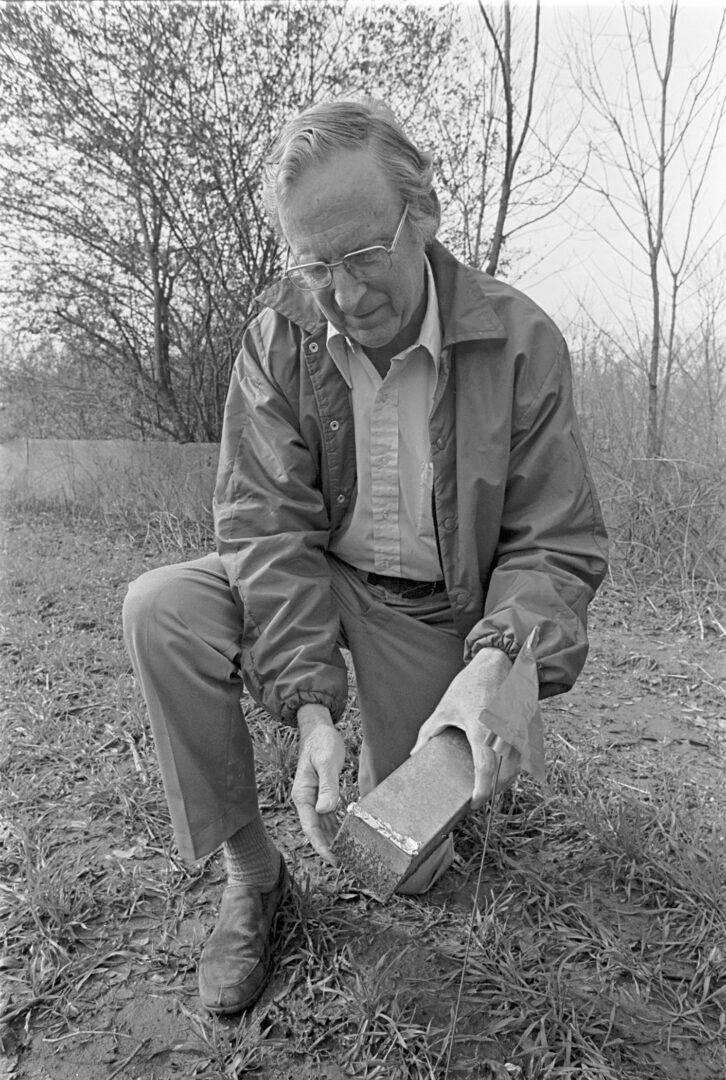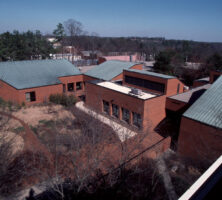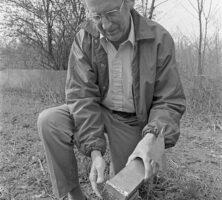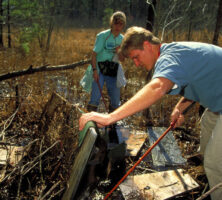The Eugene P. Odum School of Ecology at the University of Georgia (UGA), named for prominent ecologist Eugene Odum, is part of UGA’s College of Environment and Design. The school offers undergraduate and graduate degrees in ecology and conservation, and seeks to encourage the public’s ecological literacy through interdisciplinary research and study.
In 1967 UGA’s Board of Regents formally established the school as the Institute of Ecology and provided funds to hire a director, administrative director, secretary, and technician. The field of ecology at the university was growing in number and perspective rapidly, paralleling the discipline’s growth nationally and placing UGA at the forefront of many other programs and institutions.
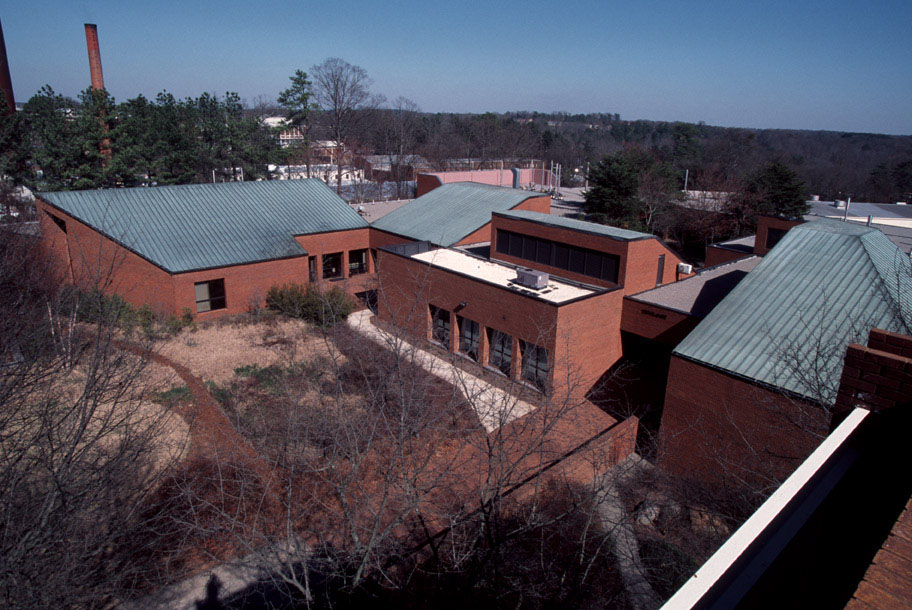
Courtesy of University of Georgia Photographic Services. Photograph by Paul Efland
At that time, Georgia had about twenty ecologists associated with various departments, schools, and centers. Eugene Odum, UGA’s senior ecologist and a scholar of international renown, was appointed director of the institute. Frank Golley, formerly director of the Savannah River Ecology Laboratory (SREL), was appointed administrative director, and the institute members were drawn from zoology, botany, microbiology, geography, statistics, and geology in the Franklin College of Arts and Sciences, the School of Forest Resources, the School of Environmental Design, the Marine Science Institute on Sapelo Island, and the College of Agriculture. Tenure-track faculty retained a primary connection with their colleges and schools, while adjunct faculty were often associated only with the institute.
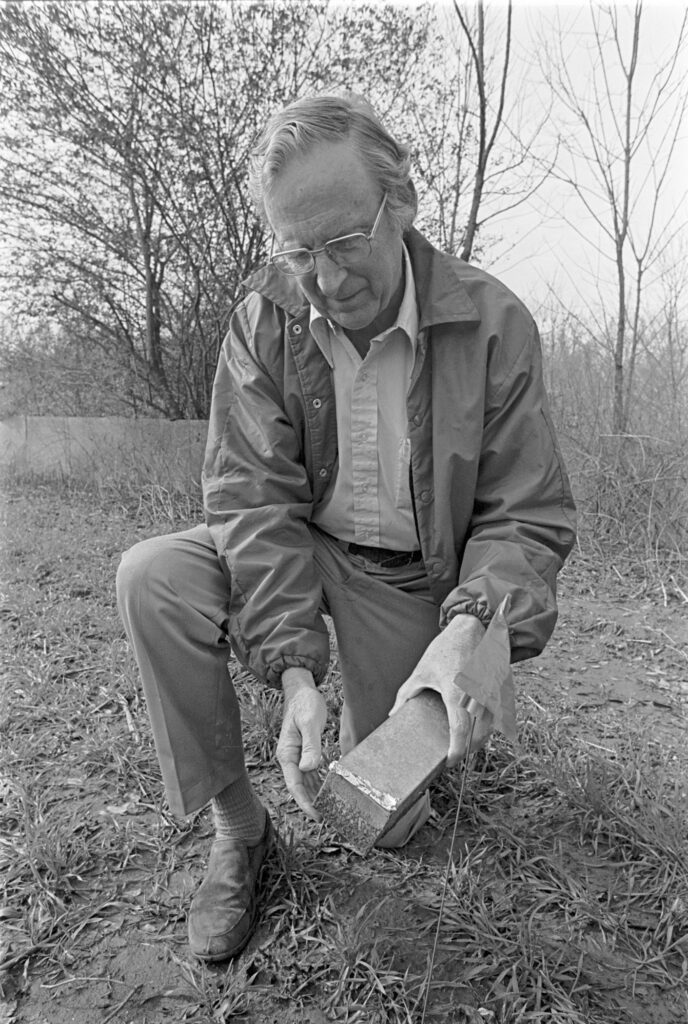
Courtesy of University of Georgia Photographic Services
Primarily a research institute, the Institute of Ecology provided an administrative home for multidisciplinary projects that exceeded the responsibility of other units within the university. In many cases active researchers were graduate students of faculty members of the institute, which provided these students academic services as well. Since institutes could not offer degrees, a proposal was written in 1970 to create a graduate faculty, which would offer a Ph.D. in Ecology. The graduate faculty operated as a separate body under the graduate school, with its own head, but the services and the continuity of the program were provided by the institute. Between 1970 and 2000, 213 Ph.D.’s were awarded.
The Institute of Ecology was initially housed in the Governor Lumpkin home next to Conner Hall on UGA’s south campus. The building is constructed of native stone and subsequently became known as the Rock House. For many years ecologists walked from their offices across the street to the Rock House for meetings, seminars, and various services. The house soon became inadequate for the growing research institute, and in 1974 a new ecology building was constructed on south campus next to the School of Forest Resources. Funded jointly by the state of Georgia and the National Science Foundation, the building was dedicated in 1977, with the secretary of the Department of the Interior, Cecil Andrus, as the principal speaker. The building provided a place for ecologists to interact as well as the laboratories required for their studies of entire ecosystems. Graduate students in the Ph.D. program were also housed in the building.
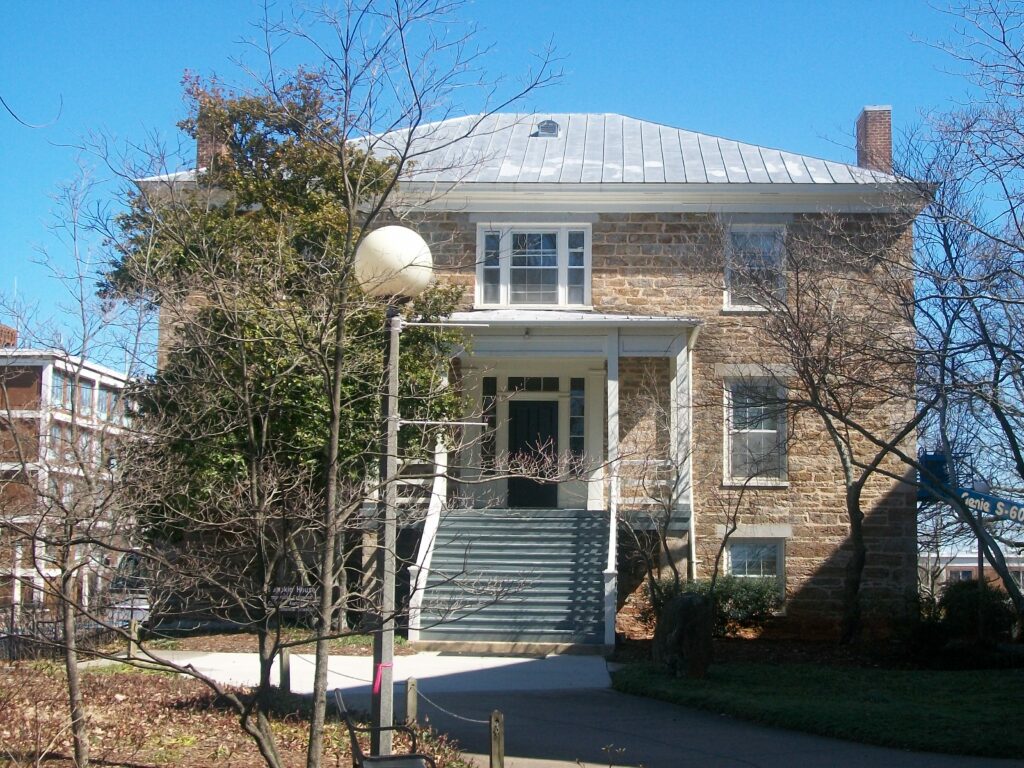
Photograph from GeorgiaInfo
The institute was widely based. It included programs at SREL and Sapelo Island, but it also involved projects at the U.S. Forest Service Coweeta Hydrologic Laboratory in North Carolina; at the Okefenokee Swamp; in the tropics of Panama, as part of the Sea Level Canal project of the Atomic Energy Commission; and in Venezuela, as part of the UNESCO Biosphere project in the Amazon forest.
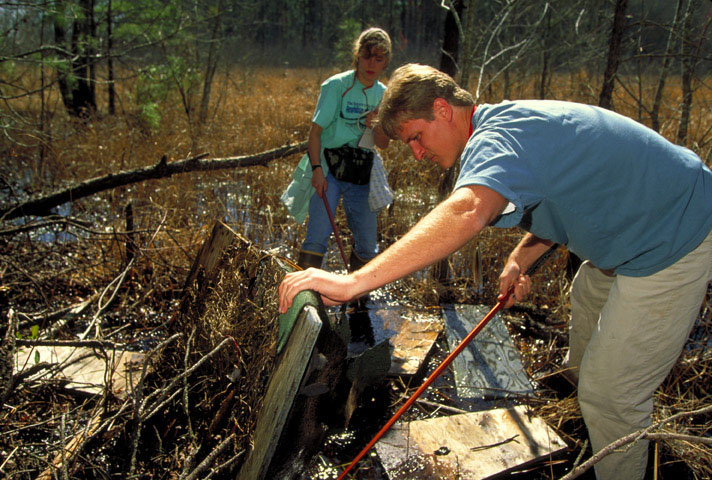
Courtesy of University of Georgia Photographic Services. Photograph by Rick O'Quinn
A service program was organized early in the 1970s as the institute received requests to consult on and solve environmental problems. Currently this service activity, which remains very strong, attracts many students and helps Georgia to solve problems of water– and land-use planning.
In the early 1990s the institute was reorganized as the School of Ecology within the Franklin College, but because it was so well known it retained its original name. This administrative change permitted the institute to develop and expand its educational offerings. A master’s degree in conservation and sustainable development was the first new program added, along with a certificate program in conservation, followed by master’s and bachelor’s of science in ecology degrees. This allowed the institute to develop and teach a new curriculum for undergraduates within its research buildings. This was difficult to accomplish because the program attracted about 100 undergraduates as soon as it opened, and there were many other students who had an interest in the environment.
The complications associated with this growth led in 2001 to the organization of a new college, the College of Environment and Design, of which the Institute of Ecology is one part, associated with the School of Environmental Design and the Environmental Ethics Program, as the other parts. In 2007 the Institute of Ecology was renamed the Eugene P. Odum School of Ecology.


